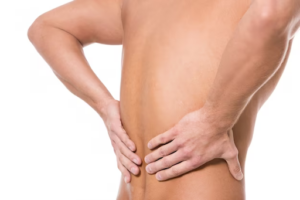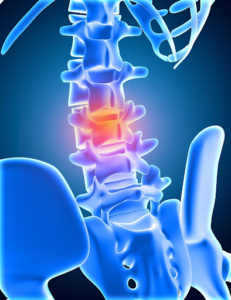Spine disorders can happen to anyone, of any age or gender, and come in various forms. Each disorder brings its own symptoms and if left untreated can become more severe and significantly impact a person’s quality of life.
In this article, we will provide an overview of the different types of spine disorders and how to treat them, including surgical options to try and cure the condition completely.
The Different Types of Spine Disorders
Below is a list of common spine disorders that can affect people at various stages of their life.
- Degenerative Disc Disease – As a person grows older, parts of the spine will deteriorate. The discs are soft cushioned tissue that sit between the vertebrae (bones in the spine) and over time, these discs can become worn out. When this happens, the affected vertebrae may rub together and cause a grinding sensation, resulting in pain and discomfort.
- Spinal Stenosis – This disorder is the narrowing of the spinal canal and is more common among people aged over 60. However, it can also affect younger people who experience bone development issues. The main cause of stenosis are bulging/ ruptured discs or bone spurs, reducing the amount of space in the spinal canal, and applying pressure on the spinal cord or nerves.
Stenosis can happen anywhere in the spine but is most common in the lower back (lumbar region). - Spondylolisthesis – Spondylolisthesis occurs when one of the vertebrae slips forward and presses on the spinal cord or surrounding nerves. Like stenosis, this can happen anywhere in the spine but is most common in the lower back.
- Ankylosing Spondylitis (AS) – Ankylosing spondylitis (AS) is a long-term (chronic) spinal disorder that involves the spine becoming inflamed, causing back pain and stiffness. Staying active can help to ease the symptoms.
- Scoliosis – Scoliosis can happen at any age but most often occurs in children aged between 10-15. The condition causes the spine to twist and curve to one side and a person with scoliosis does not always experience any symptoms, sometimes requiring no treatment.
- Kyphosis – Kyphosis is a curvature of the spine, causing the back to appear more rounded than usual. All people have some degree of curvature in the spine, but a curve of over 45 degrees is considered a medical condition.
Scheuermann’s kyphosis, also known as juvenile kyphosis involves the several vertebrae and discs displaying anterior wedging of 5 degrees or more. - Osteoarthritis – Osteoarthritis is the most common form of arthritis. It usually develops in people over the age of 40, and is more common for women. It occurs when the cartilage between joints wears down, causing the bones to rub together, resulting in inflammation, pain, and stiffness.
- Osteoporosis – Osteoporosis in the spine affects the vertebrae, causing them to lose density and become more fragile. This can result in impact fractures, making the spine less stable.
- Spina Bifida – This deformity occurs when a baby’s spine does not develop properly in the womb, resulting in a gap. It is not completely known what causes this disorder, but a lack of folic acid during the early stages of pregnancy is considered a factor.
- Spinal Cancer/ Tumors – Spinal cancer is a relatively rare condition when a malignant tumor develops on the spinal cord. Benign tumors (non-cancerous) can also develop, applying pressure on the spinal cord and nerves.
Spine Disorder Causes
Some spine disorders can develop during pregnancy or are a result of a genetic, or cognitive issue, however, there are a large number of causes, some avoidable, some less so.
Causes of spine disorders include:
- General wear & tear as a result of the aging process
- Accidents or falls
- Sports injuries
- Infections
- Poor posture
- Improper lifting of heavy objects
- Obesity and poor diet
- Repetitive strains
- Sprains and fractures
- Inactivity and a lack of exercise
Spine Disorder Symptoms
Each spine disorder can have its own unique symptoms but many conditions and injuries can result in similar complaints. This is why it is important to consult with a doctor who can determine what the problem is. Helping to identify the issue early increases the chances of it being treatable and curable before it becomes more severe and has a long-term impact.
Common symptoms of spine disorders include:
- Back pain in the affected area of the spine
- Pain that travels down to the buttocks or legs
- Stiffness or tightness
- Weakness or numbness
- A tingling sensation
- Nausea or vomiting
- A loss of bladder or bowel control
Spine Disorder Treatments
There are many different types of treatment for spinal disorders, both medically advised and measures that you can take yourself. Should a doctor diagnose one of the disorders listed above then they will likely recommend that you amend your diet, stay active, and avoid any heavy lifting or strenuous exercise.
Should the condition worsen then the next step would be to administer medication to help relieve the pain, such as non-steroidal anti-inflammatory drugs (NSAIDs). You may also be referred to a physical therapist who will help you strengthen your back muscles and core, improve flexibility, and reduce excess weight. Your therapist may also recommend stretching exercises such as yoga or pilates.
Injection-based treatments can also reduce pain in the short term, while alternative treatments such as acupuncture may also be recommended if your doctor does not think you require stronger medication.
If treatments prove ineffective, then the next step may be surgery, in an attempt to cure the problem permanently. Traditional surgeries include laminectomies and discectomies, followed by spinal fusion surgery to provide stability to the spine. Unfortunately, the rods and screws used in spinal fusion surgery limit flexibility in the spine, stopping the patient from performing a range of motions.
This is why many surgeons are now recommending modern spinal devices like the TOPS System to maintain a full range of motion.
Thank you for reading. We hope this article has offered some valuable insight into spine health and potential disorders.










